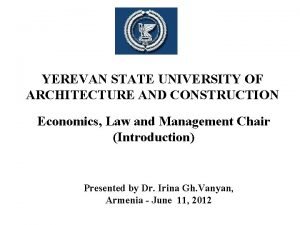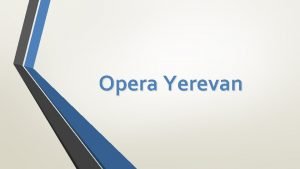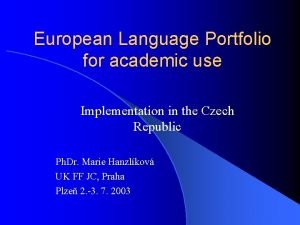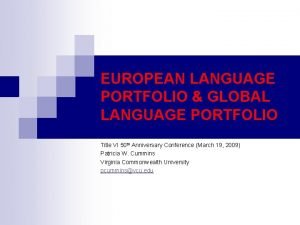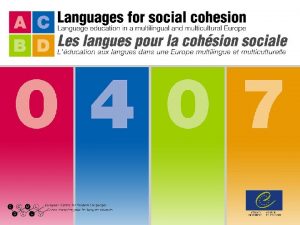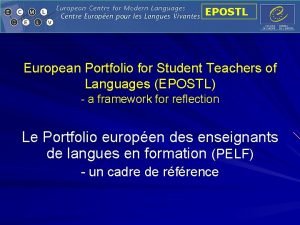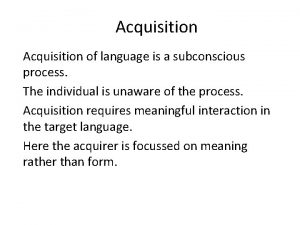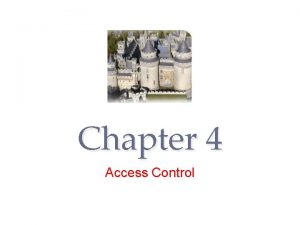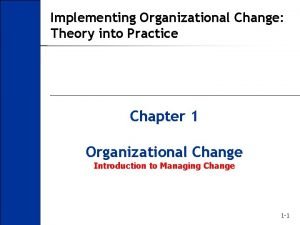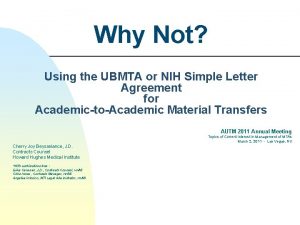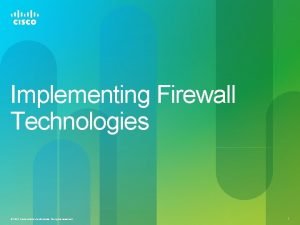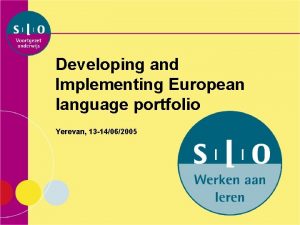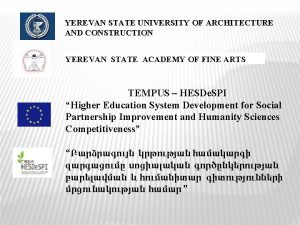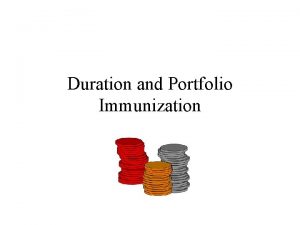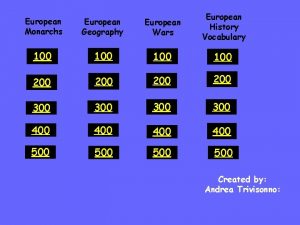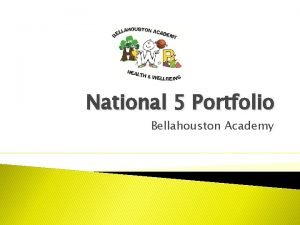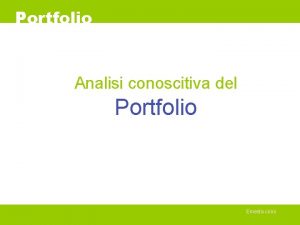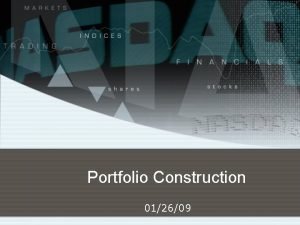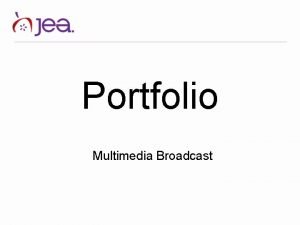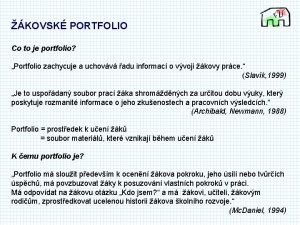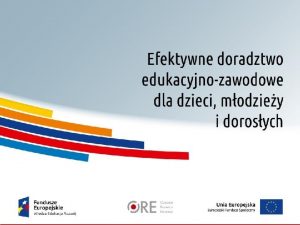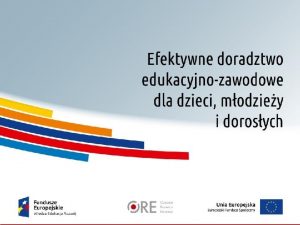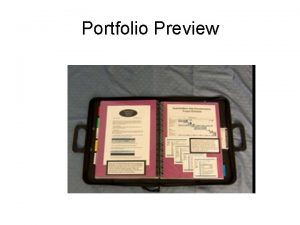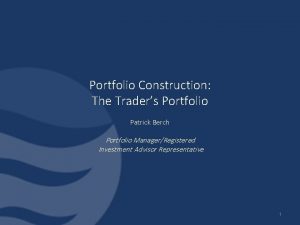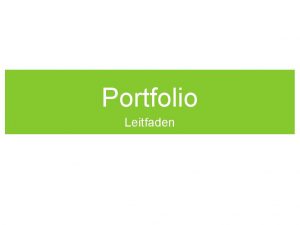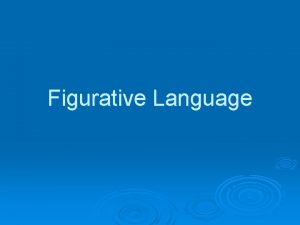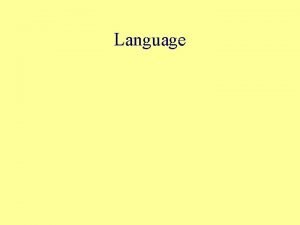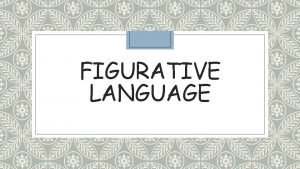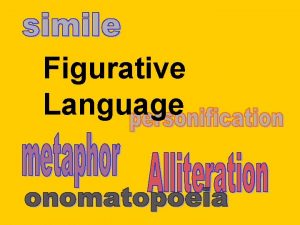Developing and Implementing European language portfolio Yerevan 13
































- Slides: 32

Developing and Implementing European language portfolio Yerevan, 13 -14/06/2005

Monday, 13. 06. 2005 • 09. 00 Welcome and aims of seminar • 'I can' at end of the seminar • • 09. 30 Introduction to the Dutch approach of the ELP 11. 00 Coffee break 11. 15 Developing can do's 12. 30 Lunch

Monday, 13. 06. 2005 • 13. 30 Developing a language portfolio • Which steps? How did we involve schools? How did we prepare the teachers? • • • 14. 30 Learning activities Introduction to the pedagogical function of the ELP 16. 00 Coffee break 16. 30 Developing learning tasks 18. 00 End of first day

Tuesday, 14. 06. 2005 • • 09. 00 10. 30 11. 00 12. 30 The intercultural part - intercultural competence Coffee break Working in groups: how to develop ? lunch • • 14. 00 15. 30 16. 00 17. 30 Feedback and evaluation Coffee break Working on pages in ELP Evaluation of workshops • 18. 00 End of seminar

I can ……. . - use instruments concerning implementation of ELP - develop understandable descriptors and if needed - situations and explanations - develop learning activities (if necessary) - develop pages on evaluation and intercultural competences

European Language Portfolio in the Netherlands Experiences of an ELP-project Yerevan/Armenia, 13. -14. 06. 2005 Dick Meijer, SLO

Summary • At the beginning 7 pilot projects • Developing ELP's for all school types – Primary schools – Lower secondary schools – Upper secondary schools – Bilingual schools – English in primary and lower secondary – Vocational schools

• Co-operation with schools – Each Project different organized. – E. g. in border region to Germany – Basis voluntariness • Research during project • Developing different ELP's • Developing website

Different ELP's • Primary schools: focus A 1 (with a few exceptions A 2) • Lower secondary (12+)focus A 2 / B 2 • Upper secondary (16+) A 2 / C 1 • Attempt to develop an instrument for lifelong learning

Experiences • • Teachers at the beginning enthousiastic Reasons - ELP could solve problems Some projects hardly any resonance Very different ideas Our intention: positive resonance ‘Hard’ confrontation with reality Because of all kinds of changes in curriculum/programs situation unfavourable

• Teachers did not see the value in relation to the 'usual' situation • Starting point was teaching situation • Progress needs its time (motivation) • After first attempt focus changed • Main point in all projects: working on the dossier

Creating a website • Pragmatic reasons • First possible to copy • Lot of paper was not inviting to work with • Now digital web based ELP • Learner has own account

Insights • It takes at least two years to implement ELP in schools • Still difficult to involve 'end-users'. • Acceptance depends on recognized value • Different school types have different goals

• Dossier more important than thought at the beginning • Necessary to think differently about language teaching • More open curriculum necessary • ELP needs out of school-activities

• Developing catalogue with learning activities • All kinds of activities, e. g. – Exchange and during exchange interview project • Working with portfolio … consuming a lot of time!!!!? ?

2003 -2005 • Developing catalogue learning activities • Implementation by organizing networks • Role of language portfolio in interface between schools • Involving textbook publishers • Implementing teacher language portfolio

2003 - 2005 • • No more paper versions of portfolio Implementing website Learners get own account Learners can give teachers access to look at the dossier • All information available for 'everyone' • Digital ELP will be instrument for long life learning

Dutch portfolio is a 'complex' project • No 'stand alone' activities: developing a common Dutch language portfolio website • Student/pupils: Portfolio - efficient learning activities • Textbook authors (a. o. ): Portfolio - language profiles (series of concrete interpretations of descriptors in terms of can do-statements) • Schools: Portfolio and help for implementation (Focus on matching secondary and vocational education)

Developing a language portfolio • We are still working on several topics: • Which next steps do we have to take? – Access to web based ELP is not enough • How do we involve schools? – Facilitating (? ) – Answers to questions as 'How do we know the self assessment is correct? ' • How did we prepare the teachers?

What did we do? • Translation of the self assessment grid into Dutch (lot of discussion) • Translation of the descriptors (in combination with the competence scales) • First articles about CEF were published • Developed ELP (layout etc. should make a 'serious' impression)

• Involved several institutes (experts in special area's) • These institutes invited teachers to take part in project • Training for teachers (but we had still the idea: ELP 'sells' itself) • We organized research • Conclusion: this is the wrong way

• What was wrong? • The way we thought about did not solve a problem of the teacher • The descriptors were difficult to understand for learners (especially young learners) • There were no 'end-users' • The wrong focus: checklists

• To prepare teachers: let them have experience with a portfolio • Try to solve a problem of the teacher (motivation? ) • Show good practices • Focus on the dossier • Make learners understand the descriptors (situations and explanations) • Offer all kinds of activities

• Make clear: working with a portfolio has consequences for the curriculum • The textbook has to play a different role • First we thought: ELP implementation is 'a piece of cake' • Now we know: it is difficult, takes years and not only offer something but ask for involvement

• Nowadays: • We offer support in developing learning activities • We focus on problem solving (ongoing learning) • Not one teacher but all teachers in one year or all teachers for German • We bring the teachers together to talk about their problems, ideas and solutions • We offer the use of the website for free

Learning activities Introduction to the pedagogical function of the ELP

• Focusing on the dossier-part means more task-based language learning • Because the result of the task (a product) can be included in the dossier • It shows to what a learner is able to do • It makes clear that language learning is more than making exercises • If possible these tasks are linked to the communicative situations in the portfolio (checklists)

Example Exchanging information Niveau A 1 Speaking 100 All FL Product: Video report with description of your place of residence and map Situation: As part of an exchange project you will prepare your new roommate for what he/she can expect in his/her new (for the meantime) place of residence. Tip: - Use an online dictionary such as www. euroglotonline. nl Task: Make a video report on your place of residence. Film the nicest, most important and most boring spots and tell about them. Make a map and mark on this map the spots where you filmed.

Getting information from a newspaper Niveau A 2 Reading 60 All FL Niveau A 2 Listening 60 All FL Product: typed or printed summary of article from newspaper Situation: You want to go on holiday and you Tip: want to know what is going on in a particular country. Look for a website of a newspaper of a foreign country for example via www. kidon. com Task: Look on the internet for a newspaper of your choice. Choose an article that might interest you. Look also for pictures etc. which might help you to understand the text. Print the text and underline the most important sentences. Write a summary in Dutch. Use the sentences you underlined. Other possibilities: Listen to the news on radio or television of the particular country and compare the information with what you read in the newspaper. You can find them also through internet.

A Task • has a product at the end (What does the learner has to show at the end? ) • is imaginable (in the short or the longer term) • fits into the world of the learner (is not hypothetical) • should have an addressee: if this is clear, it supports the communicative approach • is open in its structure, there are more solutions possible • Steering through clear specifications (e. g. structure, content and quality) • needs teamwork • has as a goal or aim: developing competences


 Yerevan state university of architecture and construction
Yerevan state university of architecture and construction Tigran chuxajyan
Tigran chuxajyan Essential elements of portfolio assessment
Essential elements of portfolio assessment Checklist model for project selection
Checklist model for project selection European language portfolio
European language portfolio Language passport
Language passport European language portfolio
European language portfolio European language portfolio
European language portfolio Epostl descriptors
Epostl descriptors Personal values statement examples for students
Personal values statement examples for students Implementing strategies management and operations issues
Implementing strategies management and operations issues Mis issues in strategy implementation
Mis issues in strategy implementation Chapter 7 strategic management
Chapter 7 strategic management The pricing tripod
The pricing tripod Designing and implementing brand strategies
Designing and implementing brand strategies Brand hierarchy levels
Brand hierarchy levels Crm project plan
Crm project plan Implementing strategies management and operations issues
Implementing strategies management and operations issues Flanker brand strategy
Flanker brand strategy Ch 7
Ch 7 Subconscious language acquisition
Subconscious language acquisition Implementing hrd programs pdf
Implementing hrd programs pdf Retail management notes doc
Retail management notes doc Qsen competencies
Qsen competencies Challenges of implementing predictive analytics
Challenges of implementing predictive analytics Implementing organizational change spector
Implementing organizational change spector Mis issues in strategy implementation
Mis issues in strategy implementation Is the traditional method of implementing access control
Is the traditional method of implementing access control Nfpa 1600
Nfpa 1600 Implementing organizational change theory into practice
Implementing organizational change theory into practice Autm ubmta
Autm ubmta Emap
Emap Stateful firewall
Stateful firewall
